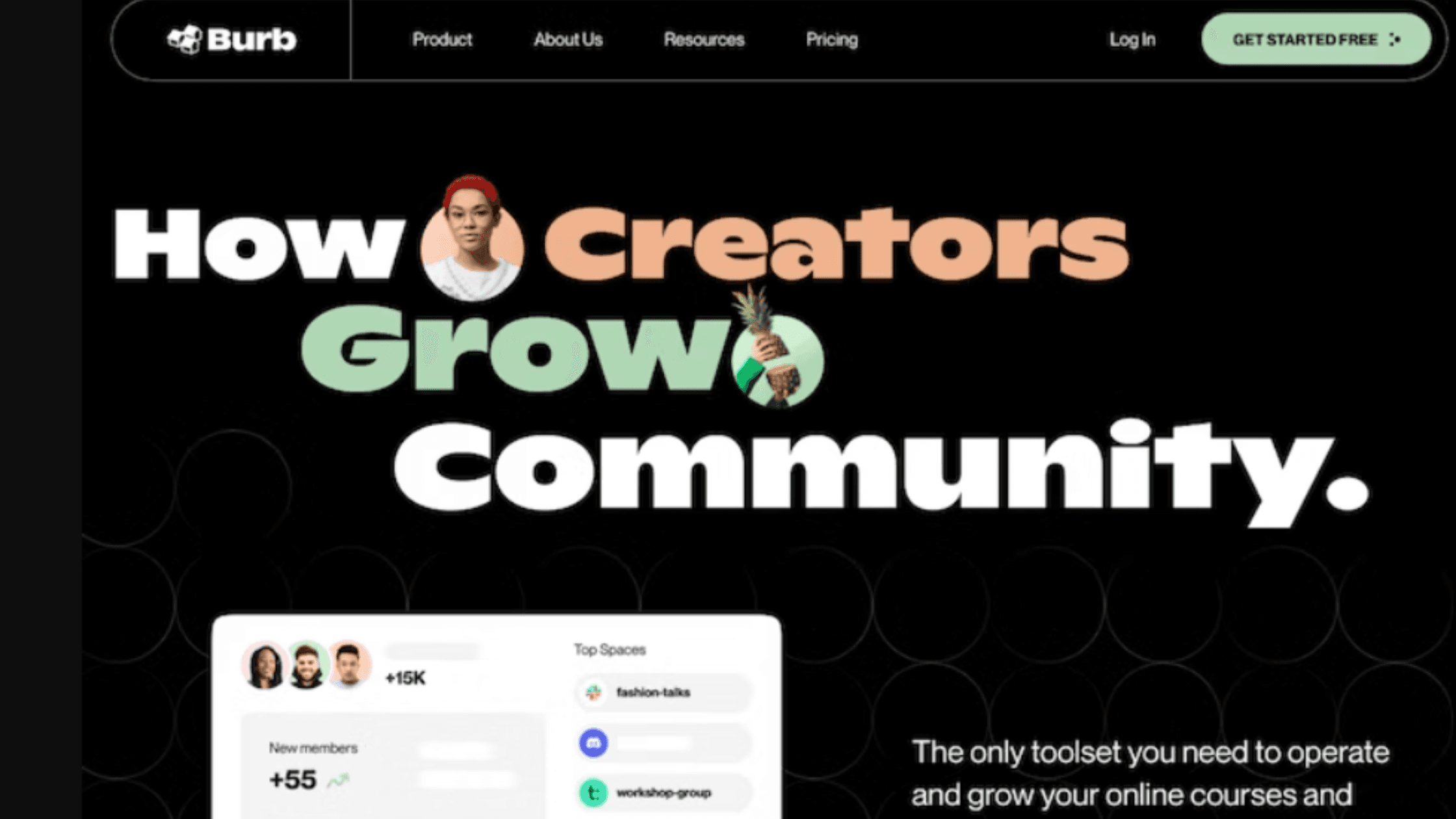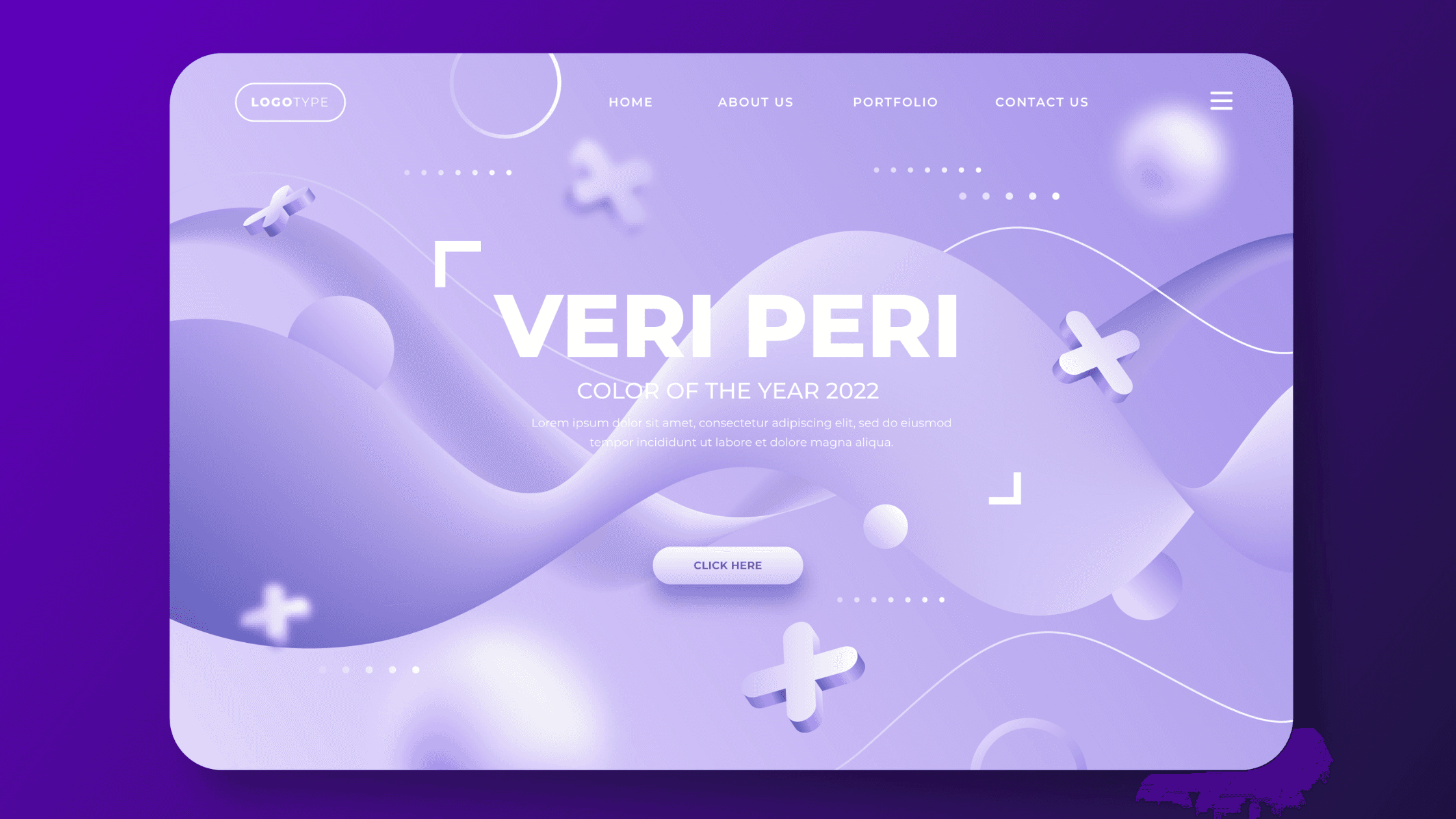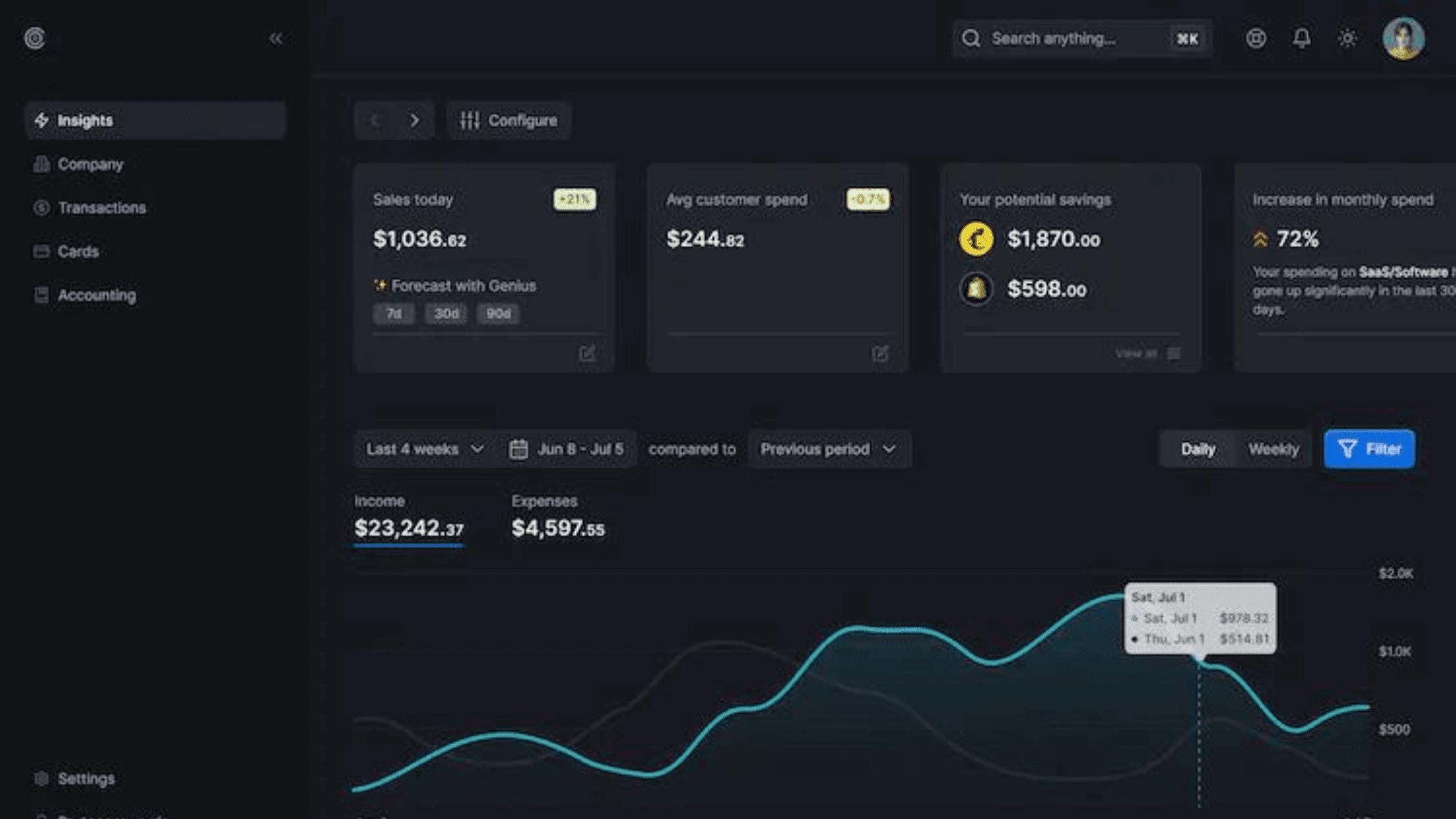Welcome to the dynamic and exhilarating world of UI/UX design, where creativity meets functionality to shape the digital experiences of tomorrow. As we embark on 2025, the landscape of user interface and user experience design is not just evolving; it's undergoing a revolutionary transformation. In this blog, we're diving deep into the UI/UX trends set to redefine digital design standards. From immersive interactive elements to AI-driven personalization, these trends are not just about aesthetics—they're about creating more intuitive, user-centric experiences that resonate in a digitally-saturated world. Whether you're a seasoned designer, a curious enthusiast, or a business owner looking to elevate your digital presence, this exploration into the future of UI/UX is your playbook for staying ahead. So, buckle up and get ready to discover how these groundbreaking trends will shake up your design approach in 2025!
Here's a glimpse into the top 10 UI/UX design trends poised to significantly impact the coming year.
1. 3D Elements and Layering: Bringing Depth to Digital Design
Step into the world of 3D elements and layering in UI design, where the flat screens of our devices transform into gateways to dynamic, multi-dimensional experiences.
A New Dimension of Interaction
The integration of 3D elements in UI design is like opening a window into a new world. It's about breaking free from the constraints of two-dimensional spaces and inviting users to explore environments that feel real and tangible. Imagine icons that seem to pop out of the screen or pages that unfold like a journey through layers of content. This isn't just about visual appeal; it's about creating a sense of depth that guides the user's eye and makes navigation more intuitive.
Enhancing User Experience with Layering
Layering in 3D design plays a crucial role in organizing information in a way that's both aesthetically pleasing and functional. It creates a hierarchy of elements, making it easier for users to process information and prioritize actions. This is particularly effective in complex applications, where layering can help manage a multitude of data without overwhelming the user.
Beyond Aesthetics: Intuitive Interfaces
The true power of 3D elements and layering lies in their ability to make interfaces more intuitive and lifelike. They provide cues that mimic real-world interactions, making digital experiences more natural and easier to navigate. This is especially important as we move towards more immersive technologies like virtual and augmented reality, where 3D design will be fundamental in bridging the gap between the digital and physical worlds.
2. Dark Mode Aesthetics: The Rise of the Night Owls in Digital Design
In the ever-evolving landscape of digital design, one trend has steadily been gaining traction and shows no signs of slowing down in 2025: Dark Mode Aesthetics. Once a niche feature, dark mode has now become a staple in the design toolkit, offering a sleek, modern look that's not only easy on the eyes but also kinder to our devices. Let's delve into why dark mode is more than just a color scheme preference—it's a design revolution.
A Soothing Retreat for the Eyes
In a world where screen time is ever-increasing, dark mode comes as a soothing balm. By reversing the typical light-background-dark-text paradigm, dark mode reduces eye strain, particularly in low-light environments. This isn't just a comfort factor; it's a health benefit. Users report less fatigue and fewer headaches, making dark mode not just a design choice but a user-centric innovation.
The Aesthetics of the Night
There's something undeniably stylish and sophisticated about dark mode. It brings an elegant, almost cinematic quality to the user interface. The darker color palettes provide a perfect backdrop for vibrant colors to pop, making images, buttons, and text stand out in a way they simply can't against a light background. This contrast isn't just visually pleasing; it's a powerful tool for directing user attention and improving readability.
A Trend That's Here to Stay
Dark mode is more than just a fad; it's a reflection of the changing preferences and needs of users in the digital age. As we continue to spend more time with our devices, the demand for comfortable, stylish, and battery-friendly interfaces will only grow. Dark mode meets these needs head-on, proving that sometimes the best design is on the dark side.
3. AI Integration: The Game-Changer in UI/UX Design of 2025
This isn't just a technological advancement; it's a paradigm shift. AI is transforming the way designers approach the user experience, turning every interaction into a personalized journey. Let's explore how AI is redefining the boundaries of design, making every digital experience not just intuitive but also uniquely tailored to individual users.
Understanding Users Like Never Before
The magic of AI in UI/UX design lies in its ability to understand and predict user behavior. By analyzing vast amounts of user data, AI-powered tools can uncover patterns and preferences that are invisible to the human eye. This deep understanding enables designers to create experiences that are not just user-friendly but also deeply personalized. Imagine a world where your digital interactions anticipate your needs even before you articulate them—that's the power of AI in design.
Personalization at Its Peak
The era of one-size-fits-all design is coming to an end. In 2025, AI is enabling a level of personalization that was once a distant dream. From customized content recommendations to adaptive interfaces that change based on user preferences, AI is making every digital experience uniquely tailored to each user. This personal touch not only enhances user satisfaction but also fosters a deeper connection between users and digital products.
Predictive Design: A Step Ahead
One of the most exciting aspects of AI in UI/UX is predictive design. By anticipating user actions, AI can streamline user journeys, reduce friction, and improve efficiency. This proactive approach to design helps create interfaces that are not just reactive but also predictive, offering suggestions and actions that align with the user's immediate needs and future preferences.
4. Complex and Animated Gradients: The New Wave in UI/UX Design
As we navigate through the vibrant landscape of UI/UX design in 2025, we're witnessing a mesmerizing trend that's reshaping our digital experiences: the rise of complex and animated gradients. This trend isn't just about adding color; it's about bringing screens to life with depth, motion, and emotion.
A Symphony of Colors: The Allure of Complex Gradients
Gone are the days of flat, monochromatic interfaces. Today's UI/UX design is all about complex gradients that weave together multiple hues in a seamless, flowing spectrum. These gradients add a layer of depth and richness that static colors simply can't match. They create a dynamic backdrop that makes every interaction feel fresh and engaging. Whether it's a subtle blend of warm sunset tones or a bold fusion of neon shades, complex gradients are turning everyday digital experiences into visual feasts.
Bringing Motion into the Mix with Animated Gradients
The magic of gradients in 2025 doesn't stop at complex color schemes; it extends into the realm of animation. Animated gradients are a game-changer, adding kinetic energy to UI elements that were previously unimaginable. Imagine a background that subtly shifts hues in response to user interactions, or a header that pulses with life, drawing users into the content. This isn't just eye-catching; it's a way to make digital interfaces feel alive and responsive.
More Than Just Aesthetics: The Psychology of Color
The power of complex and animated gradients goes beyond mere visual appeal; it taps into the psychology of color. Different colors evoke different emotions and associations, and by skillfully blending these hues, designers can create a mood or convey a message without words. A gradient that shifts from cool blues to warm yellows can evoke a sense of awakening or progression, ideal for brands that want to convey innovation. A smooth transition from deep purples to soft pinks can create a sense of luxury and sophistication. By understanding the psychology behind colors, designers can use gradients not just to catch the eye, but to speak to the heart.
5. Bold and Big Typography: Making a Statement in UI/UX Design

As we delve into the UI/UX design trends of 2025, one trend that stands out with its unapologetic charisma is the use of bold and big typography. This style has become a cornerstone in modern design, marking a significant shift from the more restrained, subtle typefaces of the past. Let's explore how this trend is reshaping the way we approach typography in digital design and why it's more than just a stylistic choice.
A Bold Move Towards Impactful Communication
In the digital space, where attention is a coveted commodity, bold and big typography serves as a powerful tool to capture and retain user attention. This style is not just about size; it's about making a statement. Large, assertive fonts command attention and convey messages with an immediacy that's hard to ignore. They are the digital equivalent of a confident handshake – they make an impression.
Injecting Personality into Interfaces
The strategic use of bold typography does more than just grab attention; it injects personality into interfaces. Each font carries its character and emotion, and when used boldly, these traits are amplified. Whether it's the sophistication of a serif font or the modernity of a sans-serif, big and bold typography can reflect a brand's personality and ethos, creating a connection with the user that goes beyond the screen.
Creating a Visual Hierarchy
One of the key roles of typography in UI/UX design is to establish a visual hierarchy. Bold and big typography excels in this regard. It helps guide users through content, highlighting key messages and making navigation intuitive. When users can easily discern which elements are the most important, their interaction with the interface becomes more efficient and enjoyable.
6. Glassmorphism: The Timeless Trend in Digital Aesthetics

In the ever-changing world of UI/UX design, certain trends have the remarkable ability to reinvent themselves and stay relevant. Glassmorphism is one such trend, a design style that continues to captivate and inspire in 2025. Drawing its essence from the elegance of frosted glass, glassmorphism infuses digital interfaces with a sense of depth, transparency, and ethereal beauty. Let's delve into how this enduring trend is evolving and continuing to make its mark in the digital design world.
The Ethereal Charm of Frosted Glass Aesthetics
Glassmorphism is akin to a dance of light and texture, mimicking the frosted glass effect that strikes a perfect balance between transparency and opacity. This style brings a sleek, modern, and airy feel to various UI elements, from cards and modals to navigation panes. The subtle blurring of backgrounds behind translucent elements not only adds depth but also creates a layered, three-dimensional look that makes interfaces feel more interactive and engaging.
A Design Trend That Evolves with Time
While glassmorphism has been a part of the design lexicon for years, it's far from outdated. Much like trends in the fashion industry, it undergoes cycles of adaptation and evolution, aligning with our evolving tastes and technological advancements. In 2025, glassmorphism has leveled up, integrating seamlessly with other contemporary design elements and responding to the latest user interface trends and preferences.
Mixing and Matching with Modern Design Elements
One of the reasons glassmorphism continues to thrive is its versatility. Designers are creatively combining this style with other trends such as bold typography, vibrant color gradients, and even minimalism, to create unique and captivating interfaces. The interplay of glassmorphism with these elements brings a fresh perspective to familiar designs, keeping the trend relevant and exciting.
A Nod to Nostalgia with a Modern Twist
Glassmorphism also taps into a sense of nostalgia, reminiscent of the early days of graphical user interfaces, but with a modern twist. This blend of the old and the new resonates with a wide range of users, offering a familiar yet innovative visual experience. It's a testament to the trend's adaptability and enduring appeal.
Embracing the Future: Where Design Meets Innovation
As we bid farewell to our exploration of the 2025 UI/UX design trends, it's clear that these trends are more than just fleeting styles; they are the roadmap to creating more intuitive, engaging, and memorable user experiences. At SoluteLabs, we don't just observe these trends; we live and breathe them, infusing them into our work to craft designs that are not only visually stunning but also functionally superior.
Creating Experiences That Resonate
The design trends of 2025 are our canvas, and at SoluteLabs, we use this canvas to paint digital experiences that resonate deeply with users. From the immersive depth of glassmorphism to the bold statements of big typography, our designs are a testament to our dedication to excellence. We don't just create products; we create experiences that leave a lasting impression on users, experiences that are as delightful to interact with as they are effective in achieving our client's goals.
A Fusion of Aesthetics and Functionality
At SoluteLabs, we believe that great design is not just about aesthetics; it's about functionality, usability, and impact. Our approach to design is holistic, ensuring that every element, every interaction, and every visual cue is aligned with the user's needs and expectations. By doing so, we don't just design products that look good; we design products that perform exceptionally, driving success and satisfaction.
In conclusion, the UI/UX design trends of 2025 are an exciting opportunity to redefine what's possible in digital design. At SoluteLabs, we are not just participants in this evolution; we are leaders, continually pushing the boundaries of creativity and functionality. Join us on this journey of innovation and excellence, and let's create digital experiences that are not just in step with the times but a step ahead.



